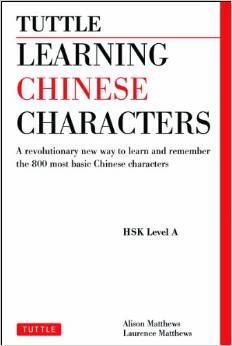 In my on-going quest to get my daughter fluent in Chinese, I came across the opportunity to review a book called “Learning Chinese Characters” published by Tuttle Publishing. In case you’re not familiar, I have a nine year old daughter, who started Chinese school when she was six. The uphill battle with Chinese school has already been well documented in this past 8Asians blog post. So I’m always on the look out for anything that can help make learning Chinese easier or more enjoyable.
In my on-going quest to get my daughter fluent in Chinese, I came across the opportunity to review a book called “Learning Chinese Characters” published by Tuttle Publishing. In case you’re not familiar, I have a nine year old daughter, who started Chinese school when she was six. The uphill battle with Chinese school has already been well documented in this past 8Asians blog post. So I’m always on the look out for anything that can help make learning Chinese easier or more enjoyable.
When I was a kid, and taking Chinese school classes myself, I remember my dad explaining to his class of adult learners about the history of the characters themselves in his attempt to make the characters more meaningful to his students. He’d show how the character for “eye”, 目, was really a pictograph of an eye, if you turned it sideways. That’s part of the premise of this book, “Learning Chinese Characters”. The idea is they’ve picked some of the most common words and show how either the character is derived from a picture, or overlaid a picture on top of the character to make its meaning more memorable. In addition they, add a phrase or saying with each character to help remember its meaning and general pronunciation.
For example, they use a depiction overlay on the character that includes the picture of a “jeep” and a saying incorporating the word “jeep” to remind you that the word “several” in Chinese is pronounced like the “jee” in “jeep”.
While my daughter’s Chinese school doesn’t emphasize learning to write Chinese characters, it does make sure the students recognize them and are able to read them. This kind of association would be really helpful. This is the type of way I wish Chinese characters were taught in my daughter’s Chinese school. It’d make learning more enjoyable for the kids. The only problem with this book is it’s really targeted at a much older reader than my 9 year old daughter. Ideally, I’d like to see a kids version of this book.
I only have one other quibble with the book, and it’s with the fact that the characters are developed and shown in simplified Chinese. As a nod to traditional, there is a small representation of the character if it’s a simplified character shown on the character’s description. But the use of the character in drawings, etc, are all in simplified. I follow my daughter’s school’s rationale on this one. It’s easier to learn traditional first and then the simplified versions associated with them. You’ll need to know traditional to read any older texts, and for reading characters in Taiwan, Hong Kong, Macau, and Chinese-speaking areas of the Philippines.
That said, I highly recommend this approach to learning Chinese characters, especially for those who aren’t native speakers and need motivation in the learning process. I’ll certainly share some of these with my daughter where appropriate.
Disclosure: I was provided a complimentary copy of “Learning Chinese Characters” for this review.








